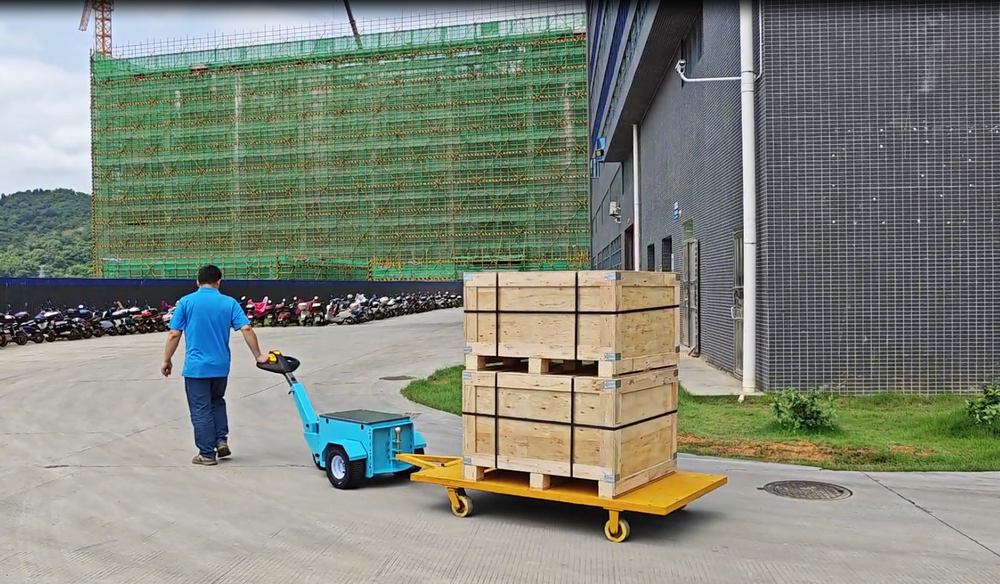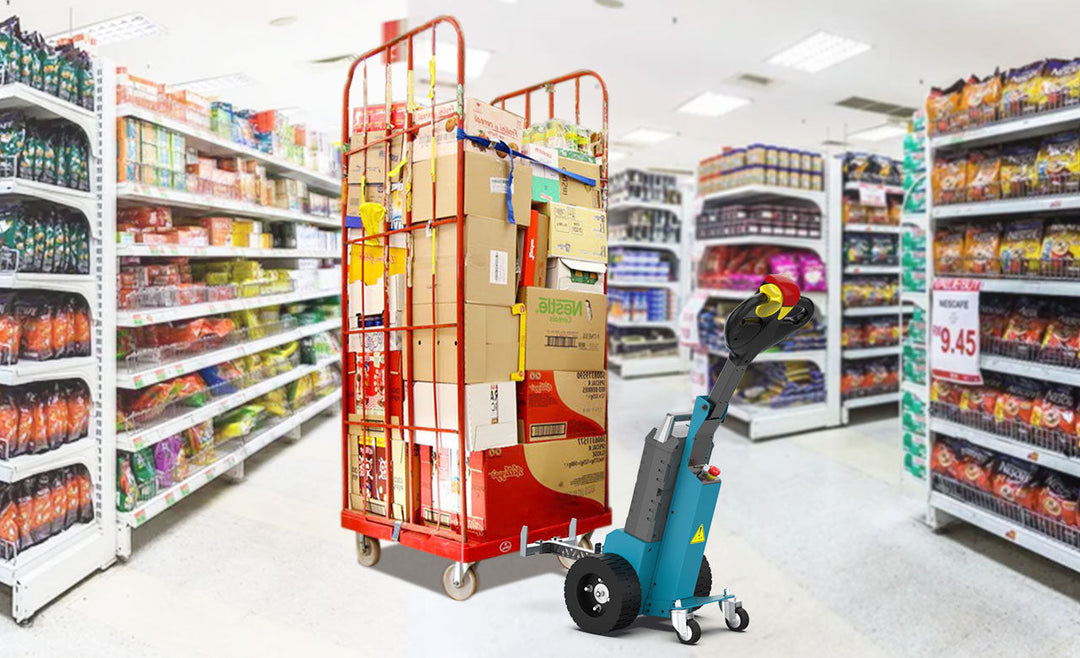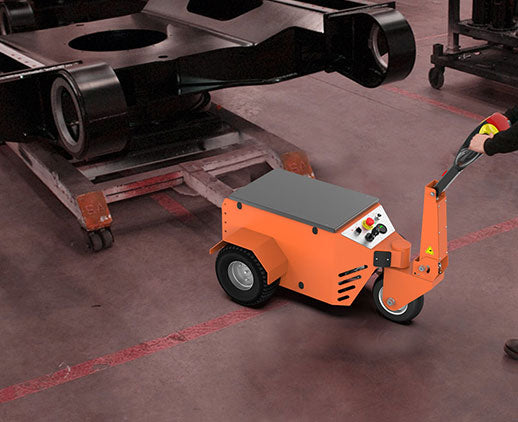What Factors Affect the Price of Electric Tuggers in the Market

The electric tuggers price in the marketplace comes with different criteria such as battery type (lead acid versus lithium-ion batteries), capacity or load capability, features with personalization options, brand market status, and maintenance and warranty options.
Battery Life
Most electric tuggers on the market use two types of batteries: lead-acid and lithium-ion. Lead-acid batteries can work for about 500 to 700 charge-discharge cycles, but lithium-ion batteries can be charged up to 1500 to 2000 cycles, which makes electric tuggers with lithium-ion batteries more expensive in the beginning but cost-effective in the long run.
But it usually takes 8 to 10 hours to charge a lead-acid battery, which may further extend under heavy load conditions. This would reduce work efficiency and increase operational costs for companies that often use electric tuggers. On the other hand, lithium-ion batteries take approximately 1 to 2 hours to charge. This can fit into quick work and reduces downtime in enhancing overall work efficiency.
Another important factor when buying electric tuggers is the influence of low temperatures on battery performance. In low-temperature conditions, lead-acid batteries charge very inefficiently and may experience as low as about 50% efficiency, with the added risk of prolonged downtime and high maintenance costs. Lithium-ion batteries have more stable performance in such low-temperature conditions, experiencing only a 5% drop in capacity even at -10°C.
For more on how tuggers can enhance warehouse operations, read this post: how tuggers improve operational efficiency.
Load Capacity
This will indirectly reflect the relationship between the load-carrying capacity and price of an electric tugger. The larger the load-carrying capacity is, the stronger the batteries, motors, and structure parts are required, thus determining its price. For instance, 2-3 tons of electric tuggers normally install a 5 kW-7 kW powerful motor. Large batteries are needed to match the above, which will make its production cost very high and give it a manufacture price of more than twice the price compared with its low-load brother.
In most industrial and warehousing environments, electric tuggers are satisfactory in the range of carrying 1 to 1.5 tons of load. Only those with 2 or more tons of load-carrying capacity are usually applied for great logistics centers or professional working environments. It is in such an environment that higher load tuggers may provide greater efficiency in transport, besides reducing much manual effort from operators.
GYPOT electric tuggers work great in high-load situations. The 2- to 3-ton load versions come fitted with powerful motors and durable batteries, which guarantee reliability of operation in different working conditions and provide high efficiency. Though these heavy-duty electric tuggers cost much more, their increased ability to bear the load and durability reduce the operating and maintenance costs for any firm, therefore increasing their return on investment.
For more insights on how tuggers enhance safety in industrial environments, visit this post: how electric tuggers improve safety.
Features and Customization Options
The prices for electric tuggers do not depend only on the basic configuration but also on additional features and the possibility of customization. The base model electric tugger price generally ranges from $2500 to $5000, whereas features added on such models usually raise the price. It could be that electric tuggers with hydraulic lift platforms that automatically regulate cargo height during transport increase the price by 15% to 20%.
The factories and warehouses that operate in narrow spaces, usually between 0.8 meters and 1.2 meters and a maximum load of 500 kg to 1 ton, need customized compact tuggers. The customized small tuggers normally have prices about 10% to 15% higher than the standard price. In contrast with small warehouses, large warehouses and logistics centers may demand extended cargo platforms over 2 meters. This customization can raise the price by 20% to 30%.
Electric tuggers with autonomous driving capabilities may automatically recognize the environment and navigation paths without human intervention, thus increasing transportation efficiency and safety. As a high-end feature, it may raise the price over $5000, but it is able to reduce labor costs, avoid errors, and raise the level of productivity very strongly in the long run. Different configurations, along with intelligent features, position GYPOT electric tuggers to meet the needs of various enterprises for efficient work in dynamic environments.
For more on how powered tugs improve material handling, read this article: the benefits of powered tugs.
Brand and Market Position
The price for electric tuggers is related to brand positioning in the market and technological edge, especially for a well-known brand such as GYPOT. GYPOT, with deep experience in designing and manufacturing electric tuggers and technological innovation, has grown as one of the leading enterprises. Generally, its electric tuggers are higher-priced, but that shows the products have notable advantages in quality, reliability, and performance. The quality and performance of GYPOT electric tuggers are well recognized in the market, so many companies are willing to pay more for longer service life and fewer failures.
From technology and quality to after-sales service, the advantages of GYPOT electric tuggers vary. GYPOT will be able to provide fast-response maintenance service for restoring equipment to work as soon as possible. This will certainly be relevant to businesses with 24/7 operations. Resistant to high-intensity work, performing perfectly even in extreme environments, thereby assuring high performance with long-time stability.
According to market research, GYPOT electric tuggers are showing really great results in various types of industrial fields. The products are robust and relatively low in maintenance, saving a lot for companies in operating and maintenance costs. Although a bit higher in initial investment, because of the low failure rate and fewer repairs needed in the long term, it enables a business to save a great deal on maintenance costs and have a higher return on investment.
Learn more about how electric tugs are transforming material movement in warehouses here.
Maintenance and Warranty
More expensive electric tuggers usually boast wider coverage of warranty, faster response time for maintenance—a factor important to businesses using long-term equipment. High-value equipment usually employs superior quality components, hence leading to a low failure rate and, accordingly, lower repair costs. Conversely, equipment with a lower price can be manufactured from cheaper components, which results in more frequent failures and requires an accordingly higher investment in repairs, adding to overall operating costs.
As such, most GYPOT electric tuggers have longer warranty periods and faster after-sales service responses. Therefore, some companies have succeeded in minimizing production losses from faulty equipment through GYPOT's rapid maintenance services. According to studies, appropriate and timely maintenance can lower business downtime and save a substantial amount of money that might be used to cover the cost of repairs and production loss.
While some higher-end electric tuggers have a higher upfront investment cost, their very low costs for repair and high long-term reliability do indeed make the overall ownership cost relatively low. GYPOT electric tuggers assure quality maintenance service and reliable technical support for better productivity and return on investment.
Learn how electric tugs can reduce labor costs: read more.












